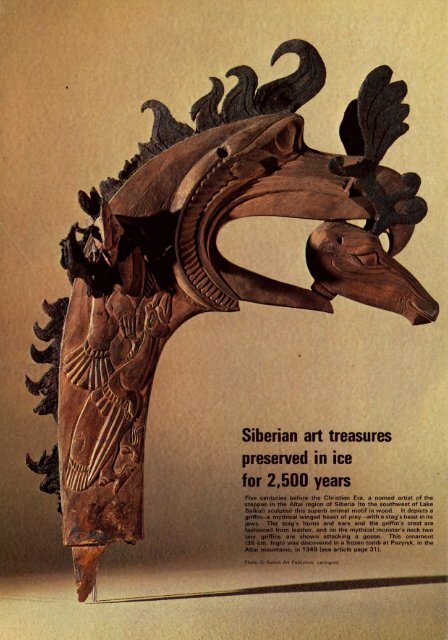The Scythians: nomad goldsmiths of the open steppes; The ...
The Scythians: nomad goldsmiths of the open steppes; The ...
The Scythians: nomad goldsmiths of the open steppes; The ...
Create successful ePaper yourself
Turn your PDF publications into a flip-book with our unique Google optimized e-Paper software.
Siberian art treasures<br />
preserved in ice<br />
for 2,500 years<br />
Five centuries before <strong>the</strong> Christian Era, a <strong>nomad</strong> artist <strong>of</strong> <strong>the</strong><br />
<strong>steppes</strong> in <strong>the</strong> Altai region <strong>of</strong> Siberia (to <strong>the</strong> southwest <strong>of</strong> Lake<br />
Baikal) sculpted this superb animal motif in wood. It depicts a<br />
griffina mythical winged beast <strong>of</strong> prey -with a stag's head in its<br />
jaws. <strong>The</strong> stag's horns and ears and <strong>the</strong> griffin's crest are<br />
fashioned from lea<strong>the</strong>r, and on <strong>the</strong> mythical monster's neck two<br />
tiny griffins are shown attacking a goose. This ornament<br />
(35 cm. high) was discovered in a frozen tomb at Pazyryk, in <strong>the</strong><br />
Altai mountains, in 1949 (see article page 31).<br />
Photo C Aurora Art Publishers, Leningrad

















